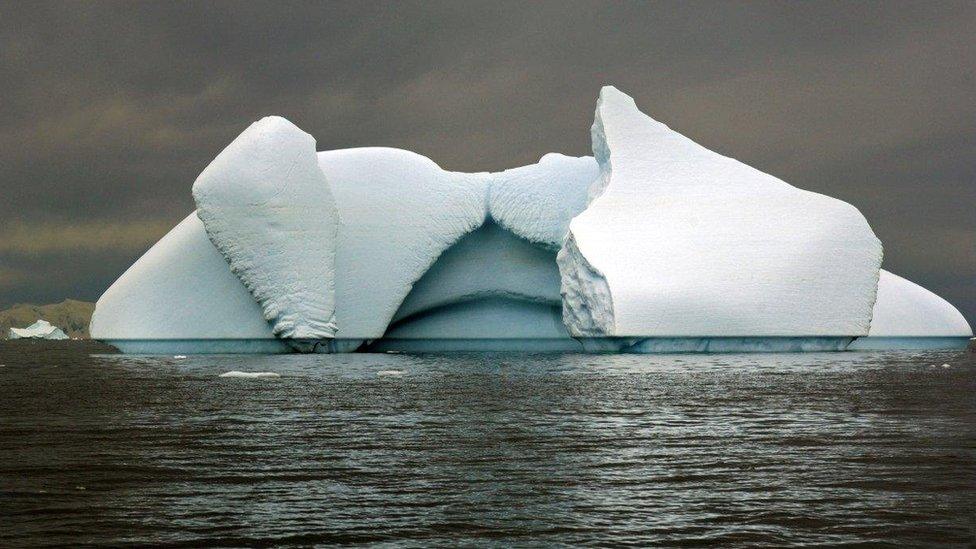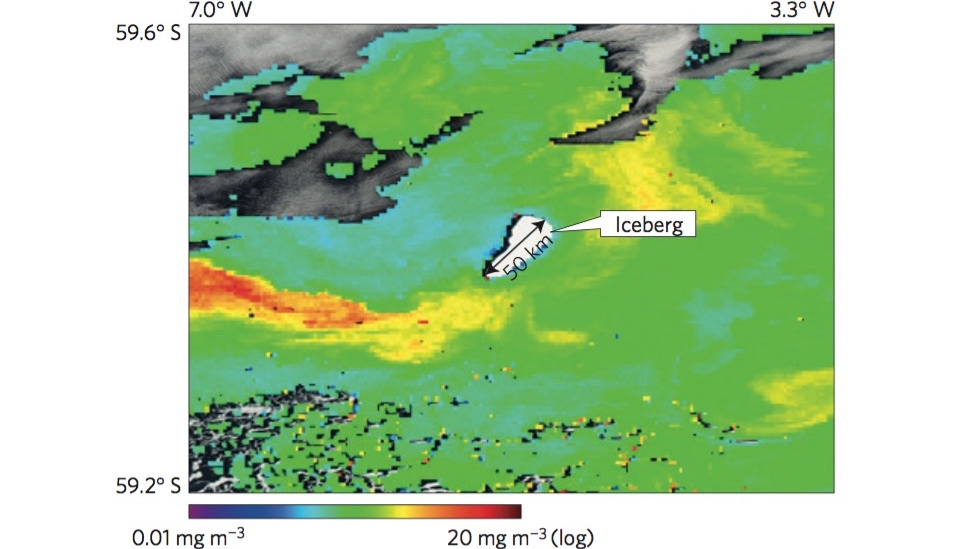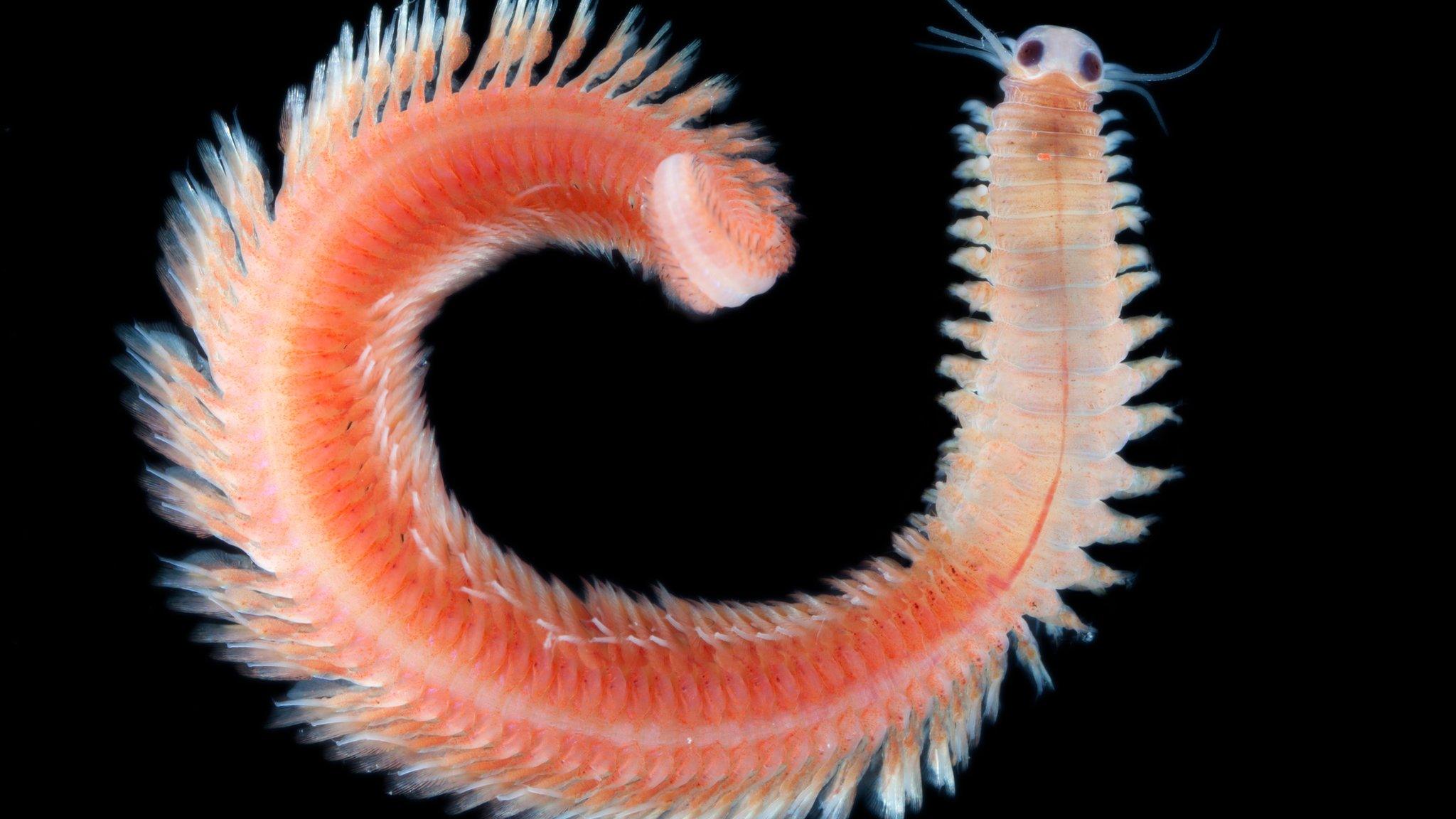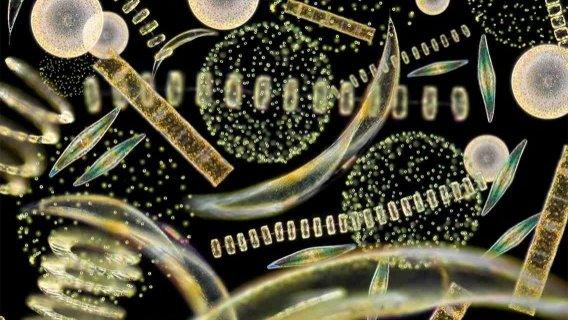Giant icebergs play 'major role' in ocean carbon cycle
- Published

Giant icebergs could be responsible for the processes that absorb up to 20% of the carbon in the Southern Ocean's carbon cycle, a study suggests.
Researchers say meltwater from these vast blocks of ice release nutrients into the surrounding waters, triggering plankton blooms that absorb the carbon.
Described as the first study of its kind, the authors examined satellite data between 2003 and 2013.
The results have been published in the journal Nature Geoscience.
A team of scientists gathered data from 175 satellite images that tracked the passage of 17 giant icebergs (measuring more than 18km/11 miles in length) through the open waters of the ocean surrounding Antarctica.
Writing in their paper, the team observed: "We detect substantially enhanced chlorophyll levels, typically over a radius at least 4-10 times the iceberg's length, which can persist for more than a month following passage of a giant iceberg."
They added that these findings suggest "this area of influence is more than an order of magnitude (more than 10 times) larger than that found for sub-kilometre scale icebergs."
Co-author Grant Bigg from the University of Sheffield, UK, said the results showed that giant icebergs had "much bigger plumes of phytoplankton (microscopic plant-like free-floating organisms) production in the ocean as a result of fertilisation by the iron that is in the meltwater... than we had previously expected.
"This means that the role of giant icebergs in the Southern Ocean carbon cycle is bigger than we had previously suspected," Prof Bigg told BBC News.

The bright colours on the image above indicate a phytoplankton bloom, triggered by the distribution of nutrients - such as iron - from an iceberg's meltwater
When there is an increase in the availability of nutrients in the water, there is a corresponding increase in phytoplankton production.
These tiny organisms behave in a similar manner to plants on land, meaning that in order to obtain the necessary energy to grow and reproduce, they undergo a process of photosynthesis, which includes the absorption of carbon dioxide. When the phytoplankton dies, it sinks to the ocean floor, locking away the carbon it had absorbed.
'Carbon storage'
Prof Bigg explained that about 3,000 giant icebergs were present in the Southern Ocean at any one time, allowing the team to calculate how much carbon was being locked away in the depths of the ocean as a result of the plankton blooms triggered by the nutrient-rich meltwater from giant icebergs.
"We estimate that giant icebergs account for between 10% and 20% of the actual vertical rate of carbon going from the surface to the deep (Southern) Ocean," he suggested.
"If giant iceberg calving increases this century as expected, this negative feedback on the carbon cycle may become more important than we previously thought."
Plankton scientist Dr Richard Kirby, who was not involved in this study, observed: "The phytoplankton at the sunlit surface of the sea has played a central role in the sequestration of carbon over millennia to affect the atmospheric concentration of this greenhouse gas, and so the Earth's climate.
"This interesting paper shows how much we still have to learn about these microscopic organisms, and how a changing climate may affect them, and also the food web they support."
- Published22 May 2015

- Published28 July 2010
- Published10 March 2014
